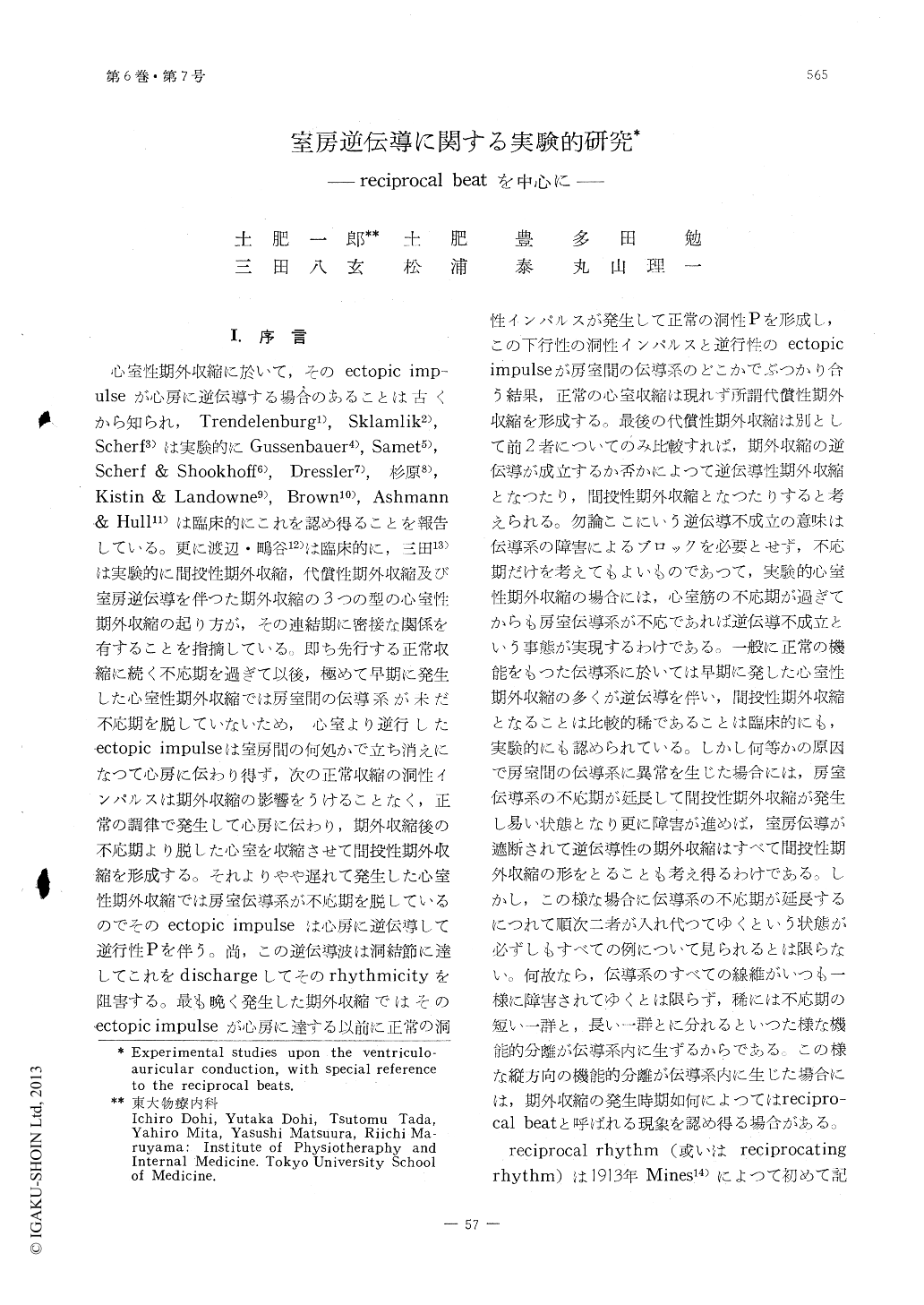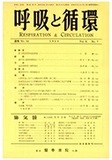Japanese
English
- 有料閲覧
- Abstract 文献概要
- 1ページ目 Look Inside
I.序言
心室性期外収縮に於いて,そのectopic imp—ulseが心房に逆伝導する場合のあることは古くから知られ,Trendelenburg1), Sklamlik2),Scherf3)は実験的にGussenbauer4), Samet5),Scherf & Shookhoff6), Dressler7),杉原8),Kistin & Landowne9), Brown10), Ashmann & Hull11)は臨床的にこれを認め得ることを報告している。更に渡辺・鴫谷12)は臨床的に,三田13)は実験的に間投性期外収縮,代償性期外収縮及び室房逆伝導を伴つた期外収縮の3つの型の心室性期外収縮の起り方が,その連結期に密接な関係を有することを指摘している。即ち先行する正常収縮に続く不応期を過ぎて以後,極めて早期に発生した心室性期外収縮では房室間の伝導系が未だ不応期を脱していないため,心室より逆行したectopic impulseは室房間の何処かで立ち消えになつて心房に伝おり得ず,次の正常収縮の洞性インパルスは期外収縮の影響をうけることなく,正常の調律で発生して心房に伝わり,期外収縮後の不応期より脱した心室を収縮させて間投性期外収縮を形成する。それよりやや遅れて発生した心室性期外収縮では房室伝導系が不応期を脱しているのでそのectopic impulseは心房に逆伝導して逆行性Pを伴う。
In clinical cases we sometimes meet the interpolated ventricular extrasystoles (VES. s) and rarely meet the VES. s with reciprocal beats. Theoretically we can consider these two forms of VES. s to appear when the retrograde conduction is disturbed in the a-v node. The author could establish these conditions in dog experiments by injecting procain-amide intravenously.
If the retrograde conductivity is injured with procainamide injection, the retrograde conduction time of ectopic impulse is gradually prolonged until sometimes the re-entry of the impulse to the ventricle appears. When the conduction disturbance is more severe, every induced VES, takes the form of interpolated one. In the record which contains both the interpolated VES, s and VES. s accompanied by reciprocal beats, the coupling time of VES. is longer in the latter cases.
In relation to the VES. s with reciprocal beats it was confirmed that the retrograde conduction time of VES. has the inverse correlation as well with the coupling of VES. as with the antegrade conduction time of reciprocating impulse.

Copyright © 1958, Igaku-Shoin Ltd. All rights reserved.


